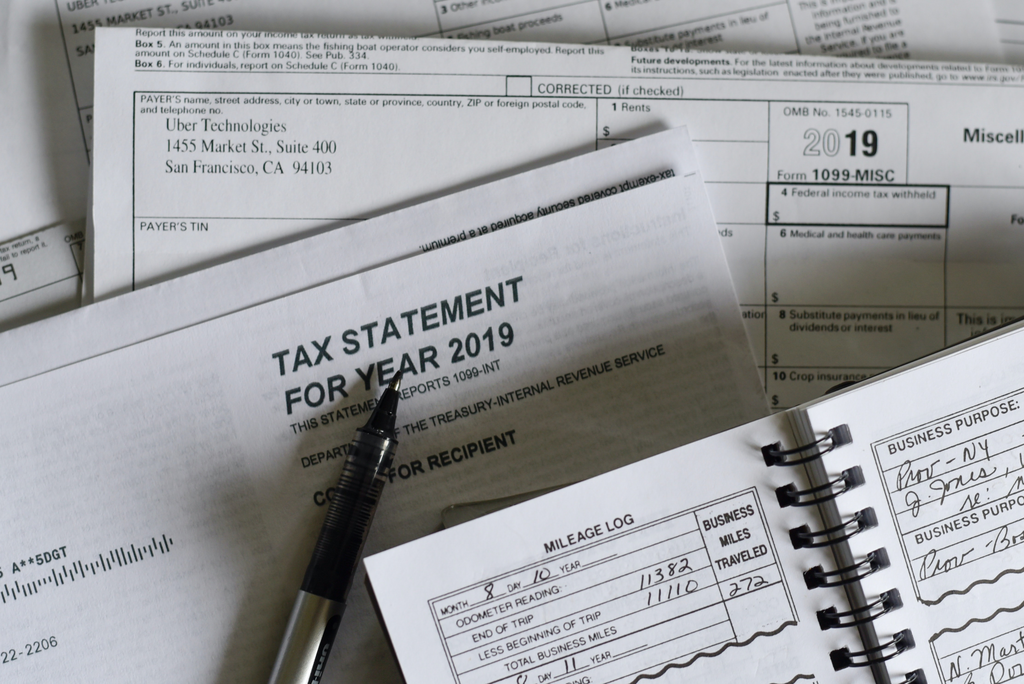If you’re dealing with a tax debt you’ve likely seen advertisements about “settling your tax debt for pennies on the dollar” more times than you care to remember. These advertisements are about the IRS’s offer in compromise debt settlement option.
The program is designed to help people settle their tax debt by paying a portion of what they owe. Understandably, every tax debtor is interested in an offer in compromise. Still, statistically, the odds of getting an IRS offer in compromise are not as high as those “pennies on the dollar” ads would lead you to believe.
The IRS rejected almost 70% of all applications for offers in compromise in 2019. Of the 20 million taxpayers who owed over $500 billion in back taxes, just over 54,000 applied for an OIC, and the IRS accepted just under 18,000. The IRS accepted even fewer offers in compromise in 2020 and 2021.
This doesn’t mean you won’t qualify for an offer in compromise, but you should be aware that the IRS doesn’t accept them unless you qualify. In this article, we’ll take a deep dive into the IRS offer in compromise. You’ll learn what it is, who qualifies, how to apply, and a lot more.

What is an Offer in Compromise?
When taxpayers can’t pay their tax debt with their monthly income or assets, they may qualify for an offer in compromise (OIC). An offer in compromise helps tens of thousands of people in trouble with the IRS every year. Keep in mind, that as many as this program helps, only a small percentage of people qualify.
An OIC allows you to settle your tax debt for less than the full amount you owe. The amount can be significant, especially for low-income taxpayers.
An IRS offer in compromise is a delicate negotiation of settlement. The process is long, and navigating it is not easy if you’re unfamiliar with how the IRS works. However, if you do qualify for the program, it can be life-changing.

Who Qualifies for an IRS Offer in Compromise?
Because collecting taxes is so important for government and public expenses, there are strict pre-qualifiers to be eligible for an OIC tax settlement. Before you make an offer to the IRS, make sure you qualify and understand what the IRS takes into account so you don’t waste your time.
The IRS will only consider an offer in compromise if:
- There is doubt as to whether the IRS correctly determined the amount you owe.
- There is doubt as to whether the debt is fully collectible. This means your assets and income are less than the amount you owe.
- The debt is correct, and you can pay the debt in full, but doing so would cause undue economic hardship. This is called effective tax administration.
If you make an offer in compromise based on fully collectible or effective tax administration the IRS will take other factors into account.
To determine whether you can pay, as well as how much you may be able to pay, the IRS generally looks at these four factors:
- Your ability to pay
- Your income
- Your expenses
- Your assets
In most cases, the IRS only accepts offers that are equal to the maximum amount you’d be able to pay within a reasonable time.
The IRS will not consider your OIC if any of the following are true:
- You are in an open bankruptcy proceeding.
- You have not filed the required federal tax returns.
- You have not made the required estimated tax payments.
- You are self-employed, have employees, and have not submitted required federal tax deposits.
- You are a retiree on a fixed income.
- You are in legal trouble with the IRS. They’d rather settle a tax liability than waste time with a lawsuit and get nothing.
- You’re facing possible bankruptcy, but your biggest problem is unpaid taxes.
- You can’t pay your full tax liability, or doing so creates a financial hardship
- You meet federal low-income guidelines: under $51,950 for a family of three, under $73,550 for a family of five, and so on.

Why Do So Few Get an Offer in Compromise Approved?
Most applicants simply don’t qualify. They may have equity in assets or future income that can pay their tax bills before the collection statute expires.
For example, the IRS will not settle a tax bill with a taxpayer who owes $20,000 in tax debt and has a retirement account worth $50,000, unless there were special circumstances.
It also may cost too much to settle. Taxpayers may not be able to generate the OIC offer amount. In 2020, the IRS increased the OIC user fee to $205 from $186. The fee can deter many people from applying for an OIC. However, the real deterrent is coming up with the settlement amount if approved.
The last part which disqualifies many taxpayers is the compliance component. To qualify you must have filed all tax returns and made all required estimated tax payments for the current year. To qualify, business owners with employees must have made all required tax deposits for the current quarter.
How Much Should you Offer in an Offer in Compromise?
The idea is to offer as little as possible, but it’s not so simple to know what that amount is. The minimum amount the IRS will accept depends on your financial situation, which you will layout in great detail on Form 433-A (for wage-earners and self-employed) or Form 433-B (for businesses).
In addition to your income and expenses, be prepared to show the following:
- If you have declared bankruptcy
- If you are the beneficiary of a trust, estate, or life insurance policy, and how much and when you might receive the money
- What’s in your safe deposit box
- Contents of your personal bank accounts, investments, available credit, life insurance policies that have a cash value
- Real estate, personal vehicles, and intangible assets such as licenses, domain names, patents, and copyrights that still have value
In most cases the IRS will not allow you to count college or any private school expenses, charitable contributions, voluntary retirement contributions or payment on unsecured debts.
The minimum offer calculation breaks down like this: The IRS expects your available assets plus a year to two years’ worth of your income above what it considers acceptable expenses. Even if your secured debt and expenses exceed your assets, the IRS will want you to pay something.

Submitting an Offer in Compromise
When you submit your offer in compromise you’re responsible for completing and including all of the required forms. In addition to the offer, you’ll need to include a collection information statement for individuals and/or businesses.
You’ll also need to include the application fee and the first payment of your offer. You will not need to pay a fee if your offer is based on doubt of liability.
You also do not need to pay the application fee or initial downpayment if you meet the low income certification guidelines. This will depend on the size of your family, house monthly income, and where you live. View the IRS’s low income certification guidelines.
If you offer to pay in one lump sum, your initial payment should be twenty percent of the total offer amount. If your offer is successful, you must pay off the remaining balance in five or fewer payments. If you’re offering to pay over the course of a payment plan, your first payment will need to be the monthly amount suggested in your offer.
If you’re successful, you’ll continue to make monthly payments until your balance is paid in full. The maximum time allowed for full payment is 24 months.
For instruction and all the necessary forms, including low income, read the IRS’s booklet on offers in compromise.
Reasons Why Your OIC Maybe Rejected
When you submit an offer in compromise to the internal revenue service you want to take your time and be meticulous. The process takes time and money, and if you make one minor mistake your offer could get rejected. For this reason, many people hire a tax professional to help them submit their offer. Common reasons for rejections include:
- Your offer is too low, and the IRS believes it can get the full payment from your future earnings.
- You fail to provide enough information to support your case and financial condition.
- Failing to be current on tax payments for the current year. When the IRS sees this they view you as a high risk of not paying the full OIC agreement.
- You’ve been convicted of a serious crime.

What Are Your Options When Your Offer in Compromise is Rejected?
Considering the high rejection rate don’t be surprised if your initial offer gets rejected. The IRS accepts less than half the offers in compromises it receives.
There are two ways to respond to the IRS if they reject your OIC. The first option is to resubmit your offer. If you resubmit it less than a month from the first offer, a new Form 656 isn’t necessary. In these cases, you’ll likely be adjusting the amount of money you’re offering.
Appealing an OIC Rejection
If the IRS rejects your offer in compromise, you may appeal the decision. You have 30 days from the rejection date to file an official request for appeal. To do so, complete this form and follow the instructions included with your rejection letter.

What are the Cons of an Offer in Compromise?
The process can take a long time – up to a year in many cases. Add on several months if you need to file an appeal. The amount of information you’ll need to provide to build your case is substantial and putting everything together can be stressful.
The guidelines for staying in compliance are extremely strict. You must remain up to date on all your taxes for five years for OIC to become finalized, and even one little slip-up gives the IRS the right to revoke the agreement and demand full payment of the tax liability you thought you had settled.
Entering an OIC also suspends the 10-year statute of limitations the IRS has to collect an IRS tax debt from you. If it’s been seven years since the IRS assessed taxes against you, it has three years to collect. So during the application process, if it takes a year to get rejected, you lose that year on your statute of limitations.
Other Options if an Offer in Compromise is Rejected
If your offer in compromise is rejected don’t worry, the IRS still offers several programs to help you get your debt resolved.
Installment Agreements
If you owe a tax debt to the IRS, there are more options available than paying it all in a lump sum. The IRS allows taxpayers to set up one of four different installment agreements. These agreements let you pay your tax debt over time. However, you will have to pay penalties and interest of as much as 10% per year.
- Guaranteed Installment agreements Available to taxpayers who have consistently filed and paid their taxes and who owe less than $10,000, not including interest and penalties
- Streamlined Installment Agreements Available to taxpayers who owe less than $50,000 including penalties and interest.
- Partial Payment Installment Agreements Available to taxpayers who owe more than $10,000 and who can show that they will be unable to repay their entire tax liability.
- Non-Streamlined Installment Agreements Available to taxpayers who owe more than $50,000. To set up this payment plan, the taxpayer or their representative will have to negotiate with the IRS directly to come up with a payment plan.
Injured Spouse Relief
If you’re able to prove that your spouse, or former spouse, failed to report or underreported income without your knowledge, or fraudulently claimed deductions you can be fully relieved from that tax burden. (even better than an offer in compromise)
There are three types of Innocent Spouse Relief
- Separation Of Liability Relief In a separation of liability relief case, the IRS basically splits the tax liability between you and your spouse. In this case, you’re only responsible for the portion allocated to you.
- Injured Spouse Relief In the case of injured spouse relief, if your refund is taken to satisfy your spouse’s debt, such as child support, you may be able to get your money back through an injured spouse claim.
- Equitable Relief Equitable relief is in most cases requested when you are ineligible for the other two types of relief. In this case, the IRS must agree that it would be unfair to hold you liable for your spouse’s tax debt.








